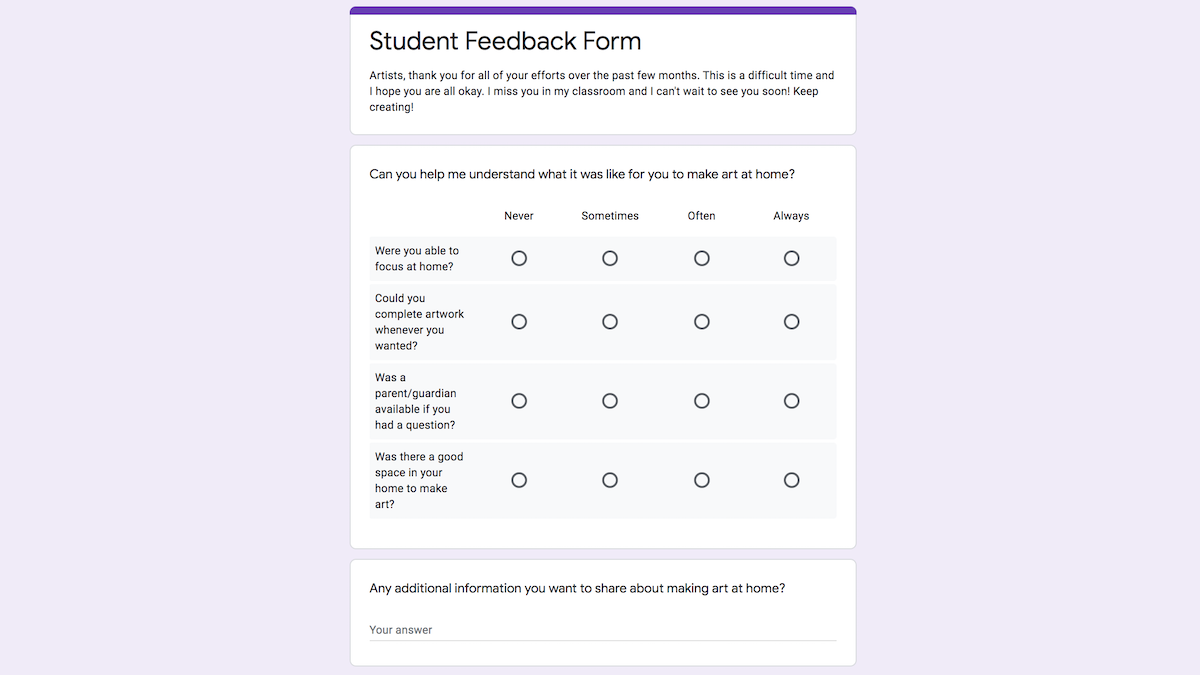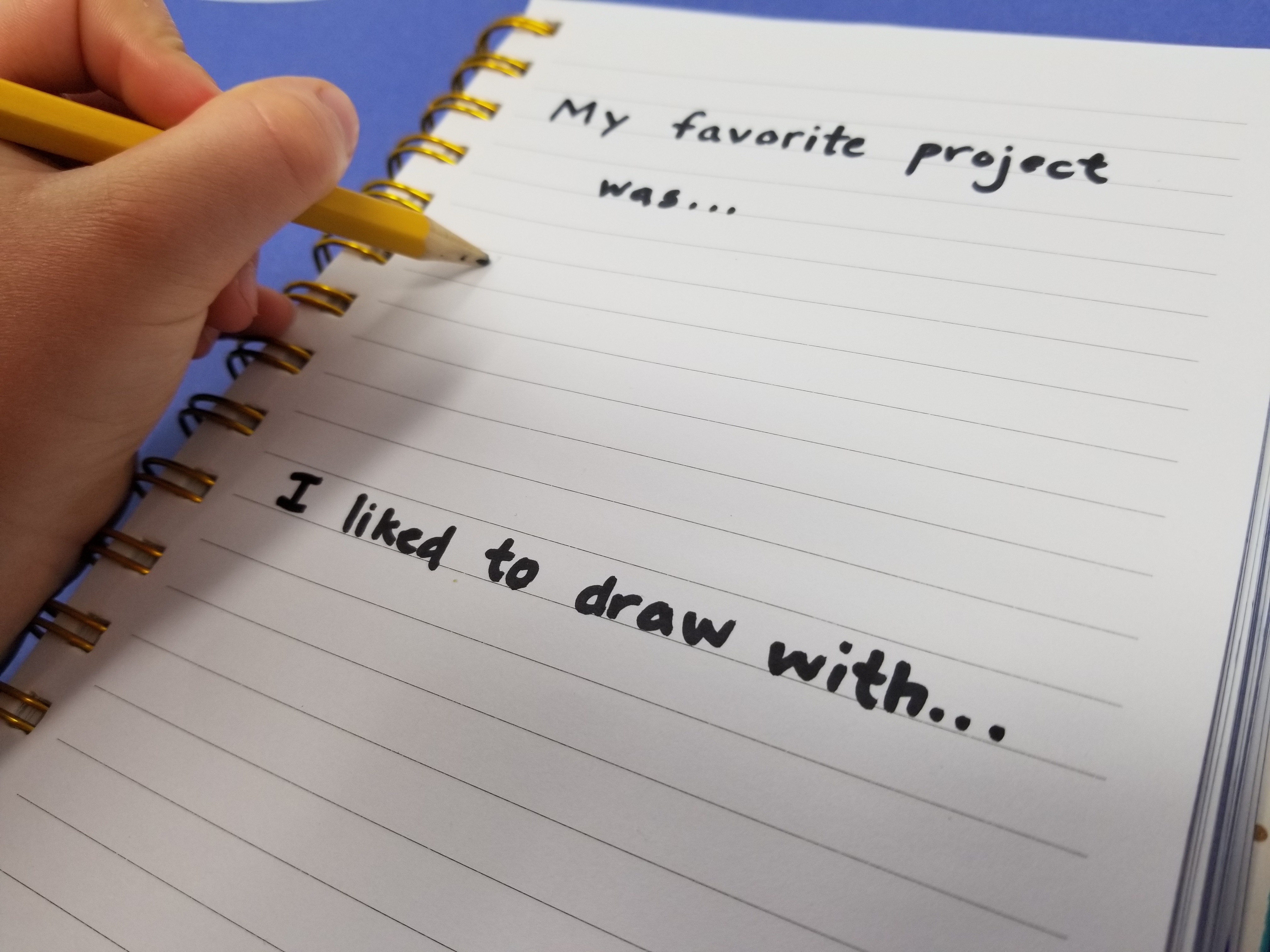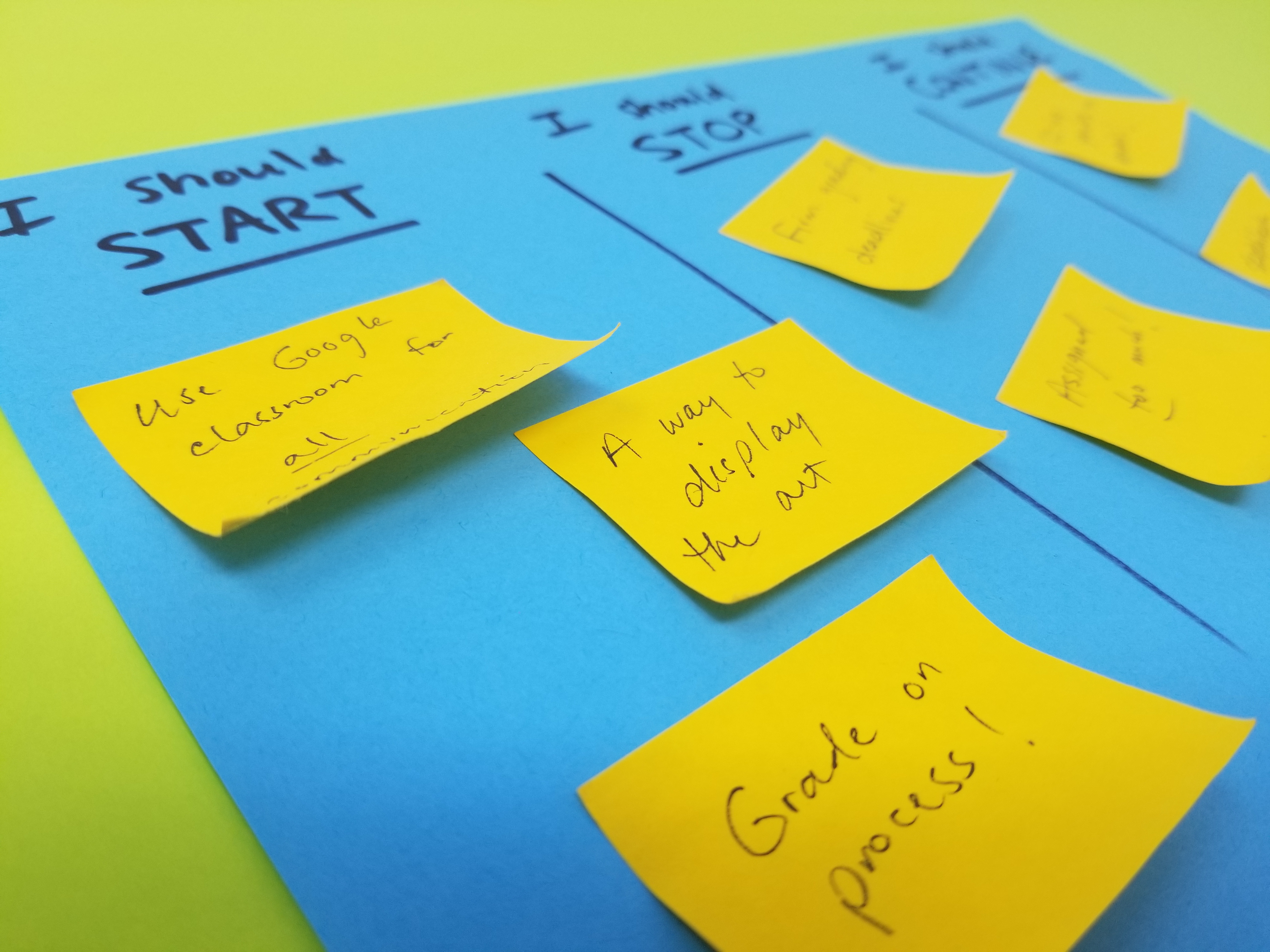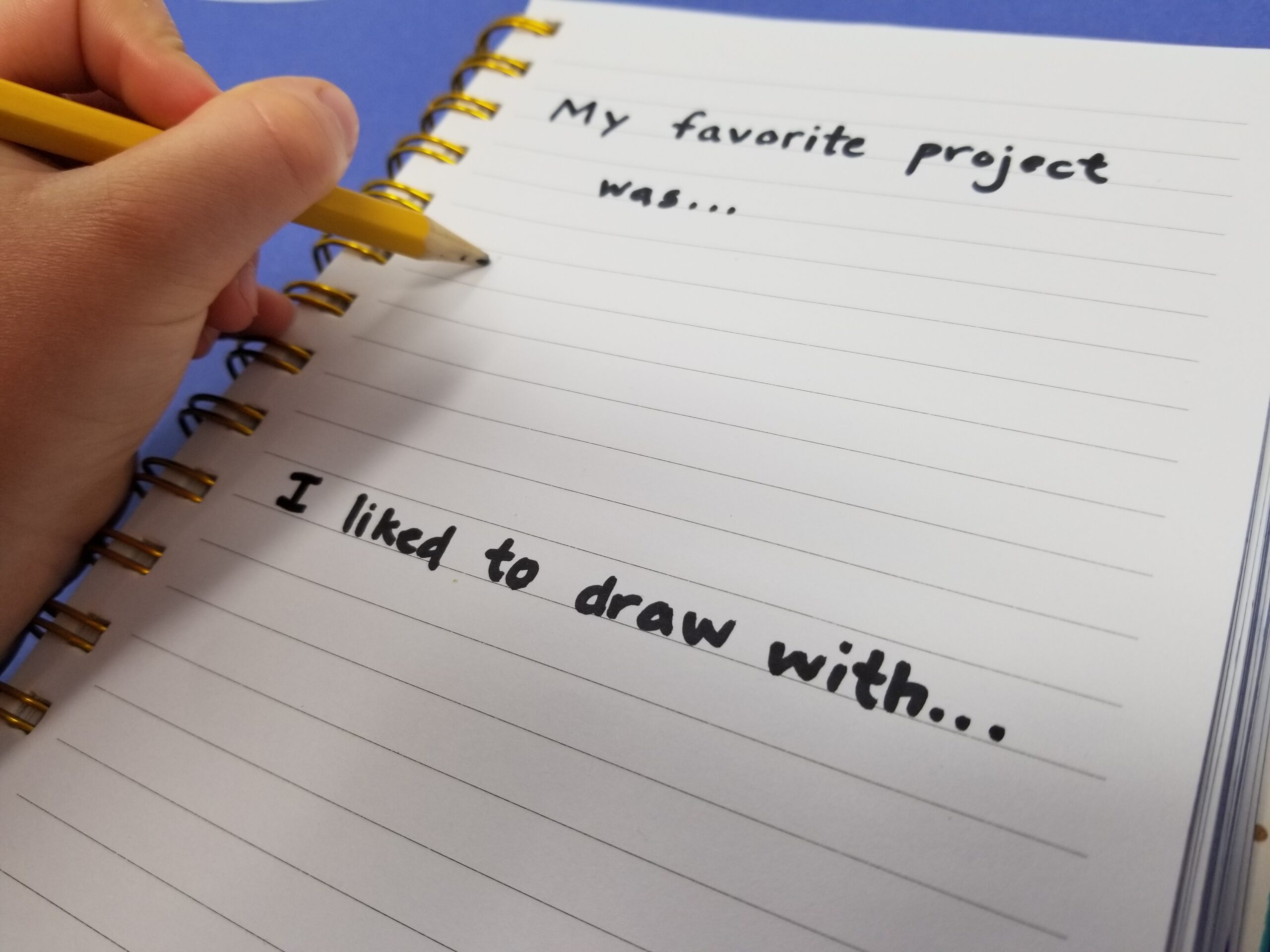Art Education and the Coronavirus (COVID-19)
Taking time at the end of this school year to reflect and hear from your students is more important than ever. This has been a crazy few months, and while the future landscape is unclear, there is likely more online instruction on the horizon. Use this time to capture input from your students about their experience and how they would do things differently next time.
Similarly, reflecting on your own practice can help you refine and strengthen your ideas for the future. Synthesizing all of that information and creating an action plan for the fall can make you more prepared than you were able to be in the spring and will help your students have the best experience possible.
How to gather student input?
Before your students leave for the summer, create an opportunity to hear their voice. Like you, they have had to make a lot of adjustments over the past few months, and it’s essential to hear their experience. Be intentional about how you connect with students to get the most participation. This could include a survey, Google Form, small group discussion, one-on-one conversations, etc. As you develop questions, think about what you can control, and take action on for the future. Each question you ask should be purposeful.

Here are some ideas to consider:
Learning Environment: Just as it was in the classroom, knowing about your students living situation can help you be a better teacher for them. With students learning at home, there are some new factors to consider that weren’t as relevant when they were in school.
Were they able to focus at home? Could they complete work whenever they wanted? Did they have other responsibilities during the school day like watching a sibling or working? Was a parent/guardian around or available when they did their schoolwork?
Communication: Students’ understanding of instructions and directions is one of the most critical factors in their success during online learning. Without being able to walk around the room and clarify any areas of confusion, your written or recorded communication has to be clear for all students.
Did someone help them read the directions or instructions? How clear were the instructions? Did they ever wish the teacher was there to clarify anything?
Digital Tools: Many students and families were tasked with the challenge of navigating multiple tools and platforms depending on what the teacher assigned and how they organized their materials. Use this opportunity to find which one they prefer.
Have your teachers used any programs or apps you didn’t like? How comfortable do you feel with Google Classroom? Which website or app from your class was their favorite?
Additional Resources: Art students at home were mostly without all of the supplies and equipment typically available to them. As a result, online projects mostly relied on what was in and around their home.

How easy was it for them to collect materials for the art projects? Which material from home did they enjoy working with the most? Were they ever concerned about not completing a project because of materials?
When you’re soliciting feedback, make sure you’re also hearing the experience of students who disengaged during online learning. You might learn a different perspective on how they processed communication, accessed resources, or their learning environment. Remember, these students were already disengaged, and online communication might not be very effective. Try calling home to get their input. Taking the extra time could result in some very meaningful changes in the fall to better support all of your students.
How to reflect on your own practices?

Transitioning everything to online learning was a massive learning curve. You might have learned new software and resources and developed new lesson plans. Working from home was also a major adjustment to the teacher’s lifestyle, and you likely had to discover through trial and error what helps you be successful at home. You are about to take several weeks off from working from home, and you don’t want to forget what you learned. Here are some potential areas for reflection:
Working from home: Take time to think about the logistics of your working from home experience. For example:
- Where were you able to be comfortable and productive?
- Did a particular structure help your workday?
- Is there a better way to infuse self-care into your routine?
- If you live with other people, does anything need to change to better manage everyone’s needs?
Student/Family communication: Delivering instruction, partnering with parents, and reaching students has been made more difficult without being in the same classroom. Think about what worked and what didn’t.
For example:
- What method of delivering instruction did you find most effective?
- What would help communicate with students and families be more consistent?
- What would you like to hear from students/families throughout the experience and how can you collect that information?
Curriculum: Best practices of online teaching are not all the same as in-person teaching. Consider the various successes and areas to learn. For example:
- What art project(s) worked really well at home and which project(s) should you reconsider?
- What can you learn from how you handled art materials this year and improve for the future?
- What external resources can you find to enhance specific lessons?
Enroll in Teaching K-12 Art Online
In the spring, when everyone transitioned to online learning, teachers everywhere were forced to react. You did the best you could. This time around, however, you can be more proactive and better prepared. Creating opportunities to hear from students, and combining their insights with your own can help lead to a better experience in the future.
What did you learn about online learning that you can share with others?
What digital resource was most helpful to you?
Magazine articles and podcasts are opinions of professional education contributors and do not necessarily represent the position of the Art of Education University (AOEU) or its academic offerings. Contributors use terms in the way they are most often talked about in the scope of their educational experiences.






